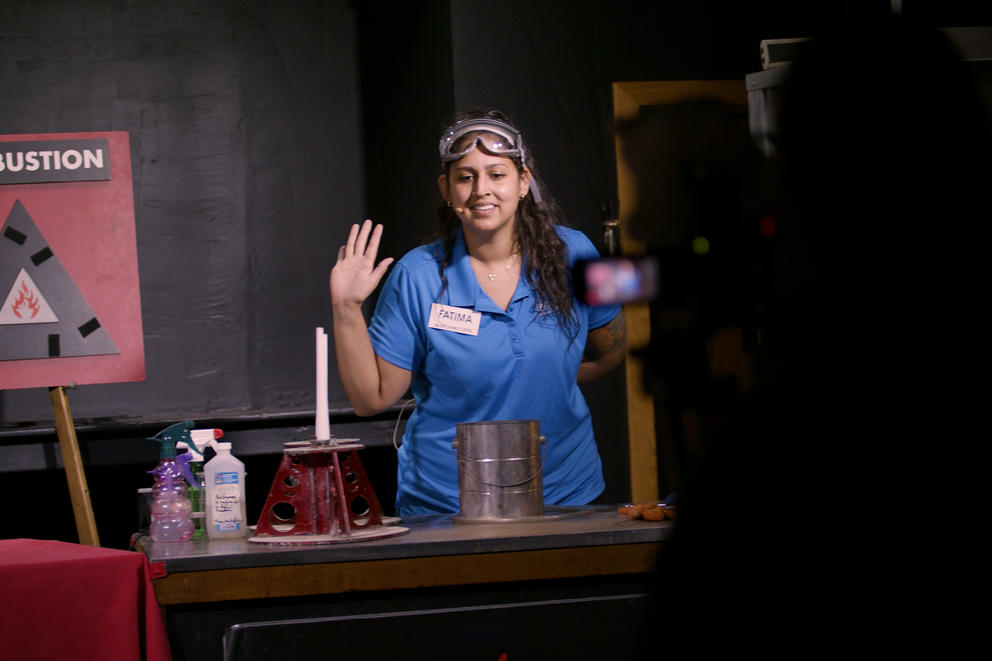Sponsored Content
When WA closed down, Seattle's PacSci brought science to students

When schools shuttered across the country in March 2020 due to the COVID-19 pandemic, Seattle’s Pacific Science Center doubled down on its efforts to keep kids learning and engaged in STEM education. Like its Seattle Center neighbors, PacSci closed its physical doors, but its free digital catalogue of STEM programming reached more than 300,000 students, families, and educators. The organization was also able to hold its Camps for Curious Minds summer camp program virtually and in-person, under social distancing measures, reaching over 3,000 young people.
“When the global pandemic stopped PacSci—and the world—in its tracks, we knew the time called for creativity and experimentation. Buildings closed, but curiosity never closes,” said Will Daugherty, PacSci CEO. In that spirit of adaptation—and at a time when many educational avenues were limited or closed to students altogether—the center helped fill gaps in learning through programs like these, building on a long-running mission to provide informal STEM education to students in Washington.
First founded during the 1962 Seattle World’s Fair, PacSci has been engaged in this kind of work for 60 years. Through offerings like the center’s Tropical Butterfly House and planetarium, the center aims to supplement traditional education by exposing kids to science, something that happened in more traditional ways before the pandemic, when school leaders routinely brought students to the center for educational field trips as a way to build on kids’ science education in concrete, hands-on ways.

Educators like Fatima Kamal have helped PacSci deliver STEM education to students right where they are, including more than 24,000 students in Title I schools in 2021. Courtesy of Pacific Science Center and Nyhus Communications.
That’s something that continued during the pandemic, even in a virtual environment, as kids swapped bus rides to Seattle Center for video calls with science facilitators. In a video produced by the science center, PacSci educator Holly Duskin described her experience working with students in digital programming. “Watching the excitement on their faces, hearing the gasps of surprise coming through the speakers is something that just helps me to kind of keep feeling that curiosity that I have,” she said.
Even when kids’ education hasn’t been disrupted by a pandemic, this type of engagement can be critical. While it might seem like students get most of their science education from traditional schooling, the reality is much more complicated. According to John H. Wherry of the National Association of Elementary School Principals, by age 18 just 13.36% of a child’s waking hours are spent in school, with 86.64% of kids’ time spent outside the classroom. Enrichment programming of the kind PacSci provides has historically added educational value to that 86.64% of a child’s waking hours. And it became especially important during the pandemic, when many children lost the crucial social and developmental benefits of in-person schooling.
While families with the resources to cover expenses like summer-camp tuition often have access to this type of educational enrichment, PacSci has worked to make participation available regardless of how much money families have. To reach low-income families, PacSci has prioritized service to 24,737 students at schools that receive funding through Title I, a federal program that provides financial assistance to public schools that serve a high volume of students from low-income families, in the interest of “improving the academic achievement of the disadvantaged,” according to Seattle Public Schools. In 2021, 178 youth received full scholarships to attend Camps for Curious Minds; this summer, PacSci plans to double this number.
When the camps resume this summer, it will be in a very different environment compared to March of 2020, as schools reopen and mask mandates are lifted, and PacSci’s Seattle Center campus is set to welcome back the public. But the organization plans to continue building on lessons learned during the pandemic. Virtual learning will carry on as a way to provide kids with equal opportunities for learning, regardless of socioeconomic status, and to ensure that learning is happening long after students leave the classroom.

